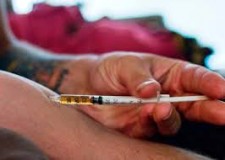
Press Release : Governor Andrew M. Cuomo announced yesterday the final report and recommendations from the Heroin and Opioids Task Force - a diverse group of experts in healthcare, advocacy, education, law enforcement, as well as parents and New Yorkers in recovery - charged with developing a comprehensive plan to combat the state's heroin and opioid epidemic. Visit Link Here: https://www.governor.ny.gov/sites/governor.ny.gov/files/atoms/files/HeroinTaskForceReport_2.pdf
New York City ~ As of June 9, 2016, combating the Heroin and Opioid Crisis (in capital letter) is a major epidemic for New Yorkers and requires Task Force Patrols. Because the State possesses a "Built To Lead" framework to address and discuss directives for final approval, a report has been put into place by the members of under Governor Cuomo's administration to execute letters for the State to take action. As a member of the media who address health and wellness stories for New Yorkers, opioid and heroin addiction spearheaded street photography to aid in reporting disease addiction behaviors.
Thousands of New Yorkers are recorded each year within medical examiner reports and police reports to add to the vital statistic records identified by legislation. Why a street photography strategy approach as a problematic step to change a major New York crisis? Recommendations! Common sense steps to end by combating a crisis of a hidden problem New Yorkers refuse to end is the beginning of a new critical charge to save lives, according to the Governor.
New Jersey also shares the same Prescription Monitoring Program data in what is called "doctor shopping" according to Governor Cuomo, and controlled substances are monitored when patients visit prescribers and pharmacies within a three-month time period. The recommendation is to improve the Prescription Monitoring Program Registry to set a Task Force in place of State engagement. So what does the Governor propose in his recommendations? There are four broken areas: prevention, treatment recovery and enforcement under the New York State Department of Health Bureau of Narcotic Enforcement (2016). For illegal drug distributors, Governor Cuomo has designed a New York Penal Law 220.78 and New York Practice Criminal Law 26:27.50 to stop the push of street addiction behaviors. First responders, law enforcement, and other potential witnesses trained in prevention programs will also report data via mail, fax, or e-mail to manage the to spotty reports on the use of naloxone.
A team of educators, health care providers, policy advocates, parents, and New Yorkers in recovery will continue to serve on a Heroin and Opioid Task Force to develop a comprehensive plan for a uncontrolled crisis. The recommendation states to expand and target awareness campaigns about heroin and opioid addiction since lack of awareness, stigma, and misinformation creates barriers to addiction. And according to the report, women 45-64 years-old are prescribed more opioids than any other age group.
To find a naloxone overdose reversal medication training near you, visit the OASAS Addiction Treatment Center opioid overdose prevention trainings page. Visitwww.combatheroin.ny.gov for more information on addressing heroin and prescription opioid abuse, including a Kitchen Table Tool Kit to help start the conversation about the warning signs of addiction and where to get help. For additional tools to use in talking to a young person about preventing underage drinking or drug use, visit the State’s Talk2Prevent website.
Share:
